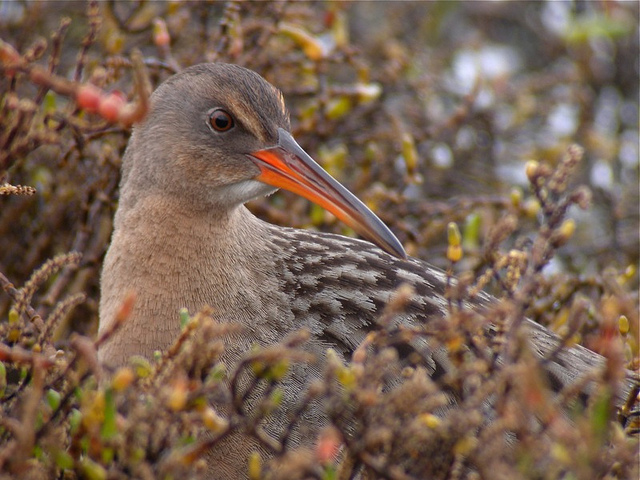
An endangered bird that lives in the Bay Area is not what scientists thought it was. The California clapper rail is a noisy, rare bird that looks a little like a small chicken and only lives in marshes around San Francisco Bay. But it’s not, in fact, a clapper rail. It’s a subspecies of something else.
“The rails have been confusing people for a really long time,” explains James Maley, the collections manager at the Moore Lab of Zoology at Occidental College. He says the rails in California have baffled scientists since they were first described, 140 years ago.
The roots of the confusion go back to the East Coast, where there were two rail species: king rails and clapper rails. Then there were a bunch of different subspecies scattered around North and South America, including three here in California. One of those is the one we’ve been calling the California clapper rail.
At first scientists thought the western birds were a subspecies of the king rails, then they decided the birds were clappers.
“But nobody could figure it out,” says Maley. “I looked at the genetics and figured out the birds in California are actually neither king or clapper rails.”